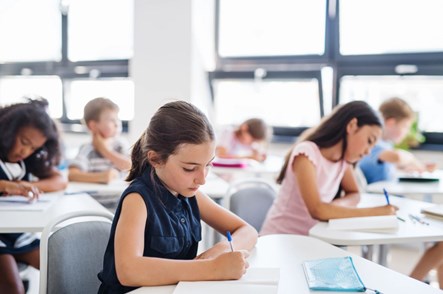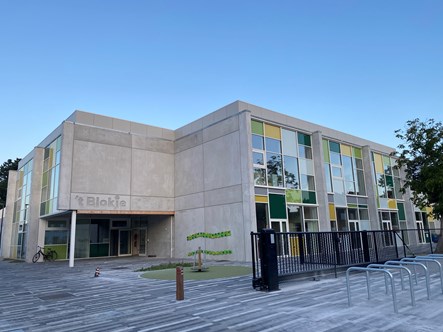
Schools
Improvement in ventilation can generate tremendous cost savings and significantly reduce the energy consumption of the building. It is also proven that the overall health and the results of students and staff is enhanced by a better indoor climate.
At Swegon we provide energy efficient solutions for indoor environments where students can be at their best, today and tomorrow.
Improve energy efficiency
Classrooms in school buildings are typically empty more than they are occupied. When rooms are not in use the ventilation demand is low, however - when the rooms are in use the demand for ventilation is very high.
By making use of these buildling occupancy trends we ‘open the doors’ to excellent energy savings potential. For example, installation of mechanical ventilation with a heat exchanger could recuperate around 90% of the heating/cooling energy in the building. By also choosing the right systems solutions for the mechanical ventilation, further savings can be made.
To take energy savings to the next level, the answer is to demand control the indoor climate. That means monitoring the actual needs in the room, and adapting the airflow, heating and cooling accordingly. In this way, the indoor air quality can be secured in the most efficient way. Studies show this brings energy savings of up to 80% of the fan energy and 40% of the heating and cooling energy.
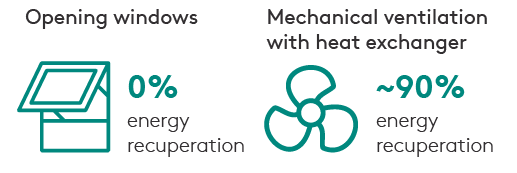
Sources: Gao, Wargocki, Wang. Ventilation System Type and the Resulting Classroom Temperature and Air Quality During Heating Season (Sept 2014) I Bakó-Biró et al. Building and environment (2011) Ventilation rates in schools and pupils’ performance I Fraunhofer Institute for Building Physics IBP (2016) Designing classrooms to enhance performance
See our guide about demand controlled indoor climate
Improve student results
Improving the ventilation in the classroom is a simple way to improve student results. Improved ventilation has a positive impact on results in many ways such as: improving alertness, memory and concentration.
Studies have shown that increasing the ventilation rate from ‘open window-level’ to 'mechanical ventilation level’ improves test results, with the more complex the task the more dramatic the effect (see graph below).
We want to create a building solution that saves energy but also allows for students to thrive and improve their results.
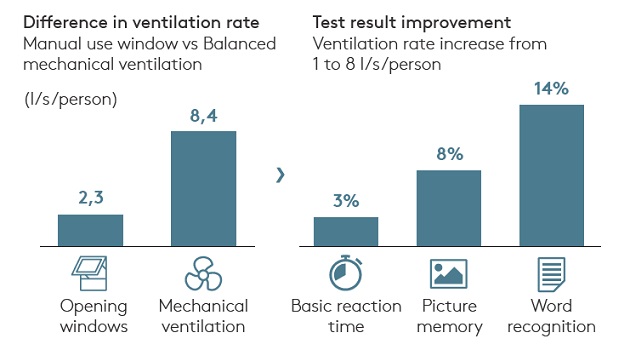
Sources: Gao, Wargocki, Wang. Ventilation System Type and the Resulting Classroom Temperature and Air Quality During Heating Season (Sept 2014) I Bakó-Biró et al. Building and environment (2011) Ventilation rates in schools and pupils’ performance I Fraunhofer Institute for Building Physics IBP (2016) Designing classrooms to enhance performance
See our guide to learn why the indoor climate matters
Improve student health
Improving the ventilation in classrooms has a direct connection to improving the health of the students and teachers, and this can be seen to directly correlate with an increase in attendance.
Poor ventilation can cause headaches, increase asthma symptoms, respiratory problems, and contribute to coughs and rhinitis. Exacerbating these health issues can cause students to stay away from the class-room.
Research has shown that a worsening of the indoor air quality (in this case an increase of the carbon dioxide level with 1000 ppm), may correspond to significantly increased absence rates among the pupils (in this case with up to 20%).

Source: Shendell et al. Indoor Air (2004) Associations Between Classroom CO2 Concentrations and Student Attendance in Washington and Idaho

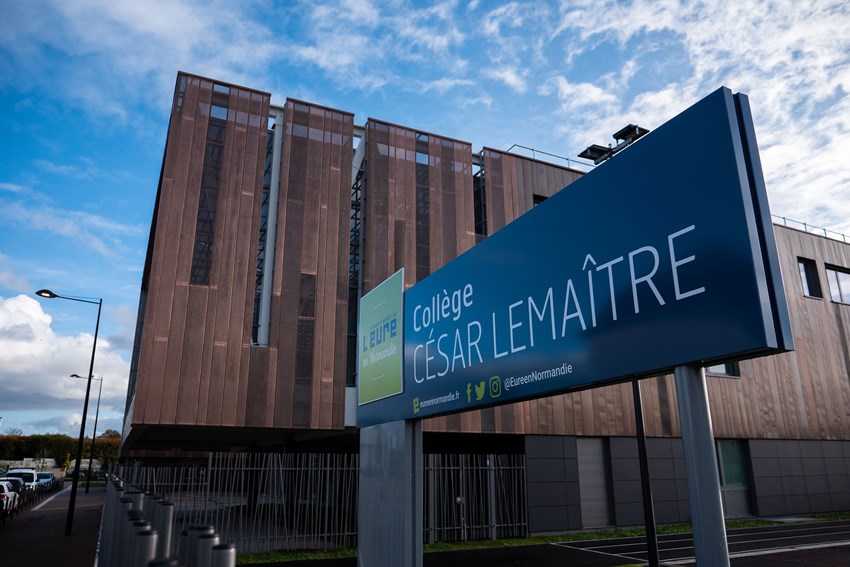
Renovating
Approximatley 75% of building stock in the European Union is energy inefficient and schools are still using rudimentary ventilation. Many school facility owners will have to make the decision to renovate in order to update their facilities to modern standards.
It's easy to see that poor ventilation is not good for our students, and for them to achieve their best, this must be addressed.
By embracing this change and understanding the positive impact of improved ventilation schools can dramatically increase their energy savings and decrease building running costs, while providing the right environment for their students to perform at their best.
Source: A Renovation Wave for Europe - greening our buildings, creating jobs, improving lives, European Comission, European Comission (14 Oct 2020)
More to learn in our energy efficiency guide
Swegon solution for better air quality in schools
We have a wide range of products starting from decentralised options moving into demand controlled centralised systems: all of which are going to improve air quality in the classroom while giving the added benefits of improved student results, health and reduced energy consumption.
There is no right or wrong solution, we work closely with our customers to determine what options there are for their specific building and what solution would answer to their needs.
Learn more here


